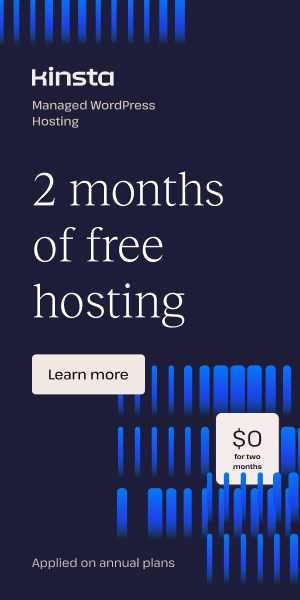How to Optimize Figma Designs for WordPress User Retention
Enhancing Website Engagement Through Expert Figma Design Practices
In today’s digital landscape, user retention represents a critical metric for any WordPress site’s long-term success. The transition from Figma designs to a fully functional WordPress website involves more than just aesthetics. It requires a strategic focus on delivering an engaging website experience that keeps users coming back. This comprehensive guide delves into actionable strategies and practical Figma tips specifically tailored to optimize Figma designs for WordPress in a way that positively influences user retention metrics.
Understanding the Importance of WordPress User Retention
Before diving into design optimization, it’s vital to comprehend why user retention should be prioritized. When visitors stay longer and return frequently to your site, it signifies strong engagement, improved search engine rankings, and ultimately, greater revenue opportunities.
- Customer loyalty: Retained users are more likely to convert, recommend, and engage with content or products.
- Reduced acquisition costs: Maintaining existing users is more cost-effective than acquiring new ones.
- Data-rich feedback loops: Loyal users provide valuable insights to refine UX further.
Plugins like Easy Digital Downloads offer ways to implement loyalty programs directly on your WordPress site, incentivizing repeat interactions and deepening user commitment.
Crafting User-Centered Figma Designs for WordPress
To translate your Figma designs into a WordPress site that fosters retention, focus on these user experience (UX) principles:
- Clear Visual Hierarchy: Use Figma’s robust layout and typography tools to establish clear navigation and content prioritization. A simple interface helps users locate desired information quickly, reducing frustration.
- Responsive Design: Ensure your designs adapt flawlessly across devices. Figma’s Auto Layout feature enables flexible, dynamic components that behave well on mobile, tablet, and desktop, matching diverse WordPress themes.
- Interactive Prototypes: Employ Figma’s prototyping capabilities to simulate navigation flows and key user journeys. This testing phase highlights friction points before development.
- Consistent Branding: Repeated brand elements build trust and familiarity. Utilize Figma’s shared libraries to maintain consistent colors, icons, and typography throughout your design files.
By incorporating these principles, you effectively set the stage for an engaging WordPress user experience that feels intuitive and visually appealing.
Optimizing User Retention Through Personalized UX in WordPress
Personalization remains one of the most powerful tactics in encouraging users to return. Through Figma, you can design distinct user pathways for various audiences before translating them on WordPress via customization and plugins.
- Tailored Onboarding Flows: Create Figma wireframes that show step-by-step onboarding experiences for different user segments, smoothing their introduction to your site’s core features.
- Content Customization Mockups: Model dynamic content blocks in Figma which WordPress can replicate via tools like Advanced Custom Fields enabling personalized recommendations or recently viewed items.
- Feedback and Engagement Points: Prototype interactive user feedback forms or chatbots to capture visitor sentiment, then deploy them in WordPress with plugins like WPForms or Tidio Chat.
Case Study: Boosting Retention for an E-Commerce Brand Using Figma2WP
An American retail startup recently partnered with a Figma2WP service to overhaul their website design, focusing on user retention improvements. Using Figma, they crafted an intuitive, mobile-first layout with custom navigation flows:
- Initial Discovery: Designed onboarding screens and product recommendation templates prioritizing user engagement.
- Iterative Feedback Loop: Tested prototypes with real users via Figma and incorporated input to reduce bounce rates.
- Seamless Figma2WP Transition: Converted the finalized design to WordPress with pixel-perfect accuracy, implementing loyalty program features using Easy Digital Downloads.
The outcome? A 30% increase in returning visits within 3 months, paired with enhanced customer satisfaction scores.
Integrating Analytics for Continuous WordPress UX Improvements
Retention depends heavily on data insights. After uploading your Figma design-based website to WordPress, integrate analytic tools to monitor user behavior and optimize accordingly:
- Google Analytics & MonsterInsights: Track user interaction patterns, conversion funnels, and engagement metrics.
- Heatmaps and Session Recordings: Use tools like Hotjar or Mouseflow to visualize clicks and scrolls.
- A/B Testing: Implement plugins such as Splitbee or Google Optimize to experiment with alternative CTAs or layouts derived from your Figma prototypes.
Regularly analyzing this data closes the feedback loop, enabling continual refinement of the Figma to WordPress user experience, ensuring your website remains relevant and engaging over time.
Additional Figma Tips to Enhance WordPress Conversion and Retention
- Utilize Components and Variants: Stay efficient and maintain consistency by designing reusable UI elements and their states.
- Leverage Auto Layout: Design flexible, adaptive components that translate perfectly to different screen sizes.
- Collaborate with Developers Early: Use Figma’s commenting and handoff tools to align with WordPress developers from the start, mitigating redesigns.
- Implement Accessibility Standards: Design with color contrast, font sizes, and keyboard navigation in mind to widen your site’s usability.
For deeper insights on UX best practices, reviewing resources such as Nielsen Norman Group and UX Collective can complement your design approach perfectly.
Why Partner with Figma2WP for Your WordPress Projects?
Working with a specialized Figma2WP service ensures your custom-designed UX concepts achieve pixel-perfect realization on WordPress platforms. This bespoke approach guarantees:
- Seamless design-to-code translation increasing speed-to-market
- Optimized site performance critical for user retention
- Responsive and accessible UI aligned with best UX practices
- Ongoing support for iterative UI/UX enhancements
Discover how to elevate your WordPress site’s engagement and keep users returning by contacting experts today.
Summary of Key Strategies to Enhance WordPress User Retention Via Figma Designs
- Adopt user-centric Figma designs with clear navigation and responsive features to facilitate intuitive browsing.
- Use personalized onboarding and content pathways crafted visually in Figma and realized on WordPress for tailored experiences.
- Implement loyalty programs and rewards on WordPress to incentivize repeated engagement and purchase behavior.
- Leverage analytical tools to gather actionable insights, enabling continuous UX improvements.
- Employ Figma’s design efficiencies (components, variants, auto layout) for scalable, maintainable site architecture.
Ultimately, the synergy between well-crafted Figma to WordPress UX transformations and strategic retention mechanisms empowers brands to build engaging WooCommerce sites and service platforms that truly resonate with their audiences, driving lasting growth.
More From Our Blog
Understanding the Conversion from Figma to WordPress for Video Blogs In today’s digital landscape, creating engaging video blogs requires not only compelling content but also a seamless user experience tailored with excellent design. For businesses and creators targeting the USA, UK, and Canada markets, the transition from Figma video design concepts to a fully operational Read more…
Designing Immersive Audio Experiences with Figma In the ever-expanding digital landscape, music websites must not only deliver sound but also engage users visually and interactively. Creating compelling band sites and music platforms begins with thoughtful design that reflects the unique style of artists while supporting seamless user experiences. Tools like Figma have revolutionized this process, Read more…


